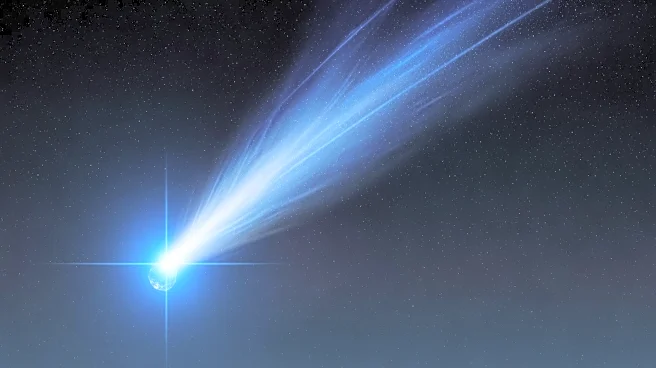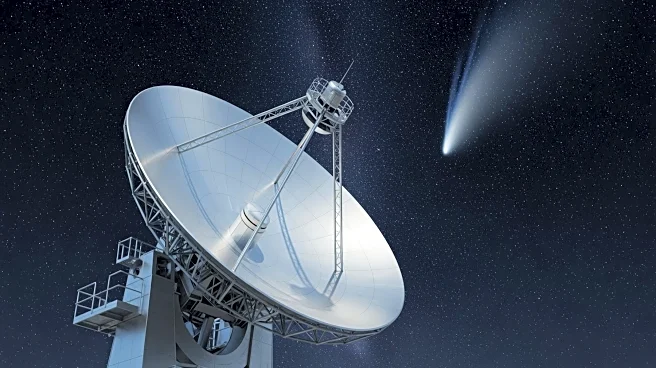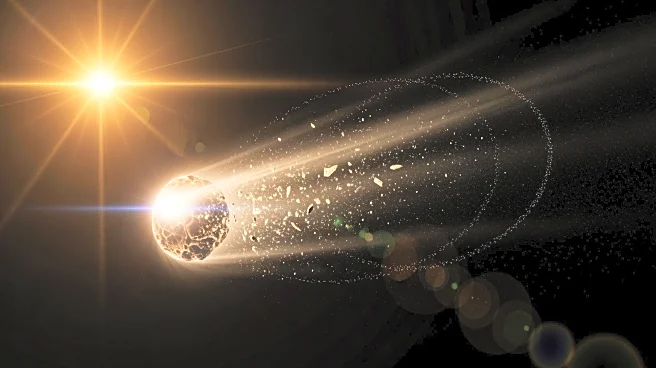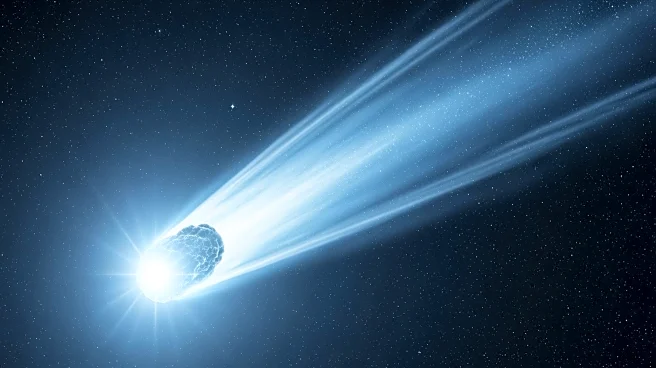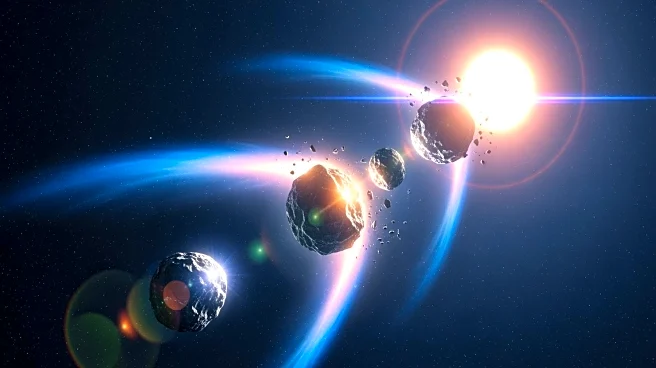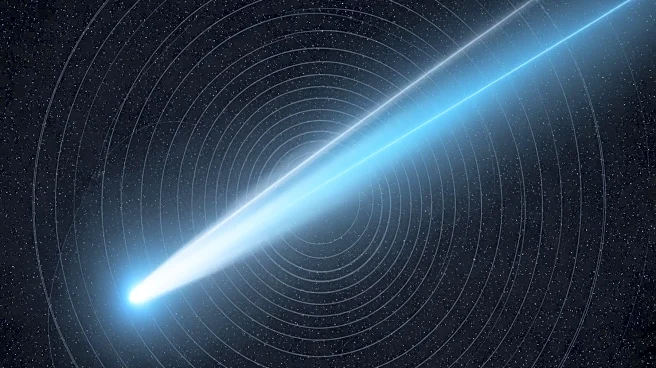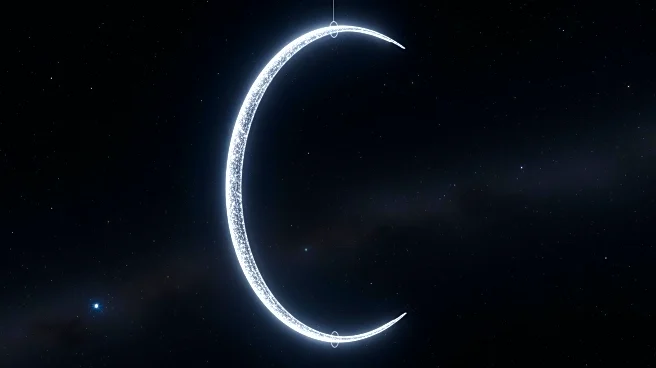What's Happening?
The interstellar comet 3I/ATLAS is undergoing disintegration as it approaches the sun, forming a vapor tail. Recent observations indicate that the comet has fragmented into multiple pieces, creating a cloud of debris. Despite initial speculations, there
is no evidence to suggest that the comet is an alien spaceship or any form of extraterrestrial technology. The unusual behavior of the comet is attributed to its natural chemistry and outgassing. The comet is expected to pass approximately 37 million miles from Earth on November 25, 2025, and will be about 1.8 AU from Earth on December 19, 2025, posing no impact threat.
Why It's Important?
The disintegration of 3I/ATLAS provides a unique opportunity for scientists to study the behavior of interstellar objects. Understanding the composition and behavior of such comets can offer insights into the formation and evolution of other star systems. The event also highlights the importance of monitoring celestial objects that pass through our solar system, as they can provide valuable data for planetary defense and space exploration. The comet's behavior, while not indicative of alien technology, continues to intrigue scientists and the public alike, emphasizing the need for continued observation and research.
What's Next?
As 3I/ATLAS continues its journey through the solar system, astronomers will likely focus on capturing more detailed images and data to further understand its composition and trajectory. The comet's closest approach to Earth in December will provide an opportunity for additional observations. Scientists may also use this event to refine techniques for tracking and studying interstellar objects, which could be crucial for future planetary defense strategies.
Beyond the Headlines
The study of 3I/ATLAS could have broader implications for our understanding of the universe. By analyzing the comet's composition, researchers can gain insights into the materials present in other star systems, potentially shedding light on the conditions necessary for life. The event also underscores the importance of international collaboration in space research, as data from various observatories and space agencies contribute to a comprehensive understanding of such phenomena.


